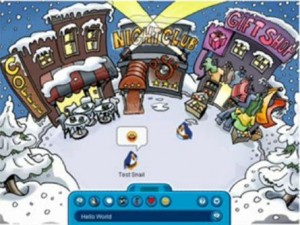There is much research work that still needs to be done on understanding how young children make meaning with computers and other digital devices, and Australian Christina Davidson sets out to demonstrate how ethnomethodology and conversation analysis can be effectively used to show what children know. She uses Jefferson’s transcript notation, and what gets printed in this article is just the tip of the iceberg from pages of notes, based on hours of video footage. Part of me feels as if this way of doing research will capture every nuance of a child’s on-line (and off-line) interactions with information: the tone of voice, the gasps and moments between speaking. Each moment is videotaped, yet still needs to be unpacked of meaning, therefore a good proportion of Davidson’s research paper is setting up the situation, presenting it with Jefferson’s notation and then discussing what it means. It becomes a tedious process, and rather than letting the child’s words speak for themself, there is this triple underlining of mundane details, such as Matt’s Google search of an image he already has in a book at home. Like trying to watch a flower bloom, this child’s discovery will take time and adults should be wary of trying to speed up the process. Each moment may reveal a unique perspective on what the child already knows, and what is being discovered. It still remains an emotionless retelling, and the reader must supply what is going on inside the child’s mind during each step of the recorded activity. There does not seem to be any notation for the internalization process, although Davidson eventually refers to Vygotsky’s concept of “self-talk” in her discussion on what happened.
Much Ado About Notation: “Oh that she were here to write me down an ass!”
While I cannot say I was won over by the transcription process, even as conversation analysis seems to be the close cousin to discourse analysis: both are concerned with who said what, yet most forms of discourse analysis seems to go deeper into why things are said rather than how they are uttered. The researcher is still not reading the participant’s mind, but there is still a sense than both are taking part in the conversation instead of the researcher timing the gaps between syllables. A third and more direct way of representing research is narrative inquiry, where the conversation between participants and researchers is represented as a dialogue, closely matching what gets written up as a play’s script. There is still ways of indicating pauses and half-formed phrases, but it can cleverly include inner thoughts and reflection. None of these reporting methods will truly capture the moment as it happened, but then even the video camera can only catch so much. It comes down to the researchers making the final call, based on all the theory and related practice that have been part of their studies. Essentially, this academic intuition is the best way to judge whether a child understands something new or not – and in the end it is simply an educated guess. In this case, Matt realizes that the web image of green basilisk lizard was one that he already looked, based upon the highlighted text in list of Google hits. Here is how I would write up the same scene (Excerpt 4) with narrative inquiry.
The white screen lights up Matt’s face, and his eyes scan the list of search results.
MATT: Hey, I’ve seen this one before. (clicks on the first listed website) It’s cool…
As soon as the desired image appears on the screen, his hand manipulates the mouse.
MATT: Look… on that picture. (presses the screen with his finger)
RESEARCHER: Wow…
MATT: it’s running on water. (scrolls down the rest of the page) Well, I am actually making a lizard book and this might be a good one for it.
He clicks on the first image and it soon fills the screen.
MATT: I’ll mke it bigger, a bit.
It is not exactly Shakespeare, but I feel captures the moment as reported by Davidson while giving the reader some mental space to interpret what is happening. The question that immediately leaps to mind is how this five and half year old child knows how to make a lizard book using web resources such as a Google search engine. Davidson research builds up to the point of answering the question: will Matt find the image he is looking for? and narrates an overly familiar situation but leaves it at that. Engaging research needs to work beyond this point of reporting.


